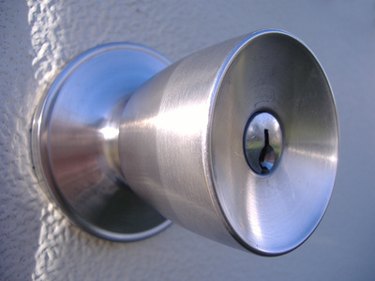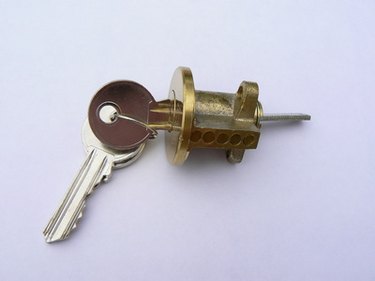Things You'll Need
Original key for every lock being changed
Rekeying kit for each lock brand

One of the biggest expenses you can incur when moving into a new apartment or home is changing the locks. The cost of a locksmith varies depending on where you live but as long as you have the original keys, save the money you'd pay to have new locks installed and rekey the existing locks yourself. A basic rekeying kit can cost as little as $20 which is inexpensive compared to the $250 you could pay to have a similar quality door knob and lock installed by a professional. Available at most local and online hardware stores, rekeying kits contain everything you'll need, including two keys. Assuming that the kit you've selected corresponds with the brand of lock you're changing, focus and follow the instructions. The whole process should take no more than 20 minutes.
Rekeying a Master Lock
Step 1
Push the fine tipped tool included in the kit into the doorknob clip to separate the knob from the door. If there are screws in the doorknob, loosen and remove them with a screwdriver to remove the knob.
Video of the Day
Step 2
Place the tube shaped tool on the lock and push out the cylinder. Using the appropriate tool, separate the retainer ring from the cylinder. Insert the existing lock key and turn the cylinder to an open position. Now, carefully push the cylinder plug out of the cylinder body.
Step 3

Using the rekeying tweezers, remove the old pins. Following the color coded chart that shows you where to place the new pins, begin the rekeying process. Make sure that the cylinder is open or at 90 degrees before pushing the plug back into the cylinder.
Tip
When testing the new key in the rekeyed lock, be sure to secure the cylinder cap so the tube and pins don't fall out.
Warning
If you reapply the cylinder cap too loosely, the key may get stuck in the lock. Reapply the cap too tightly, and the key may not turn when inserted.
Video of the Day